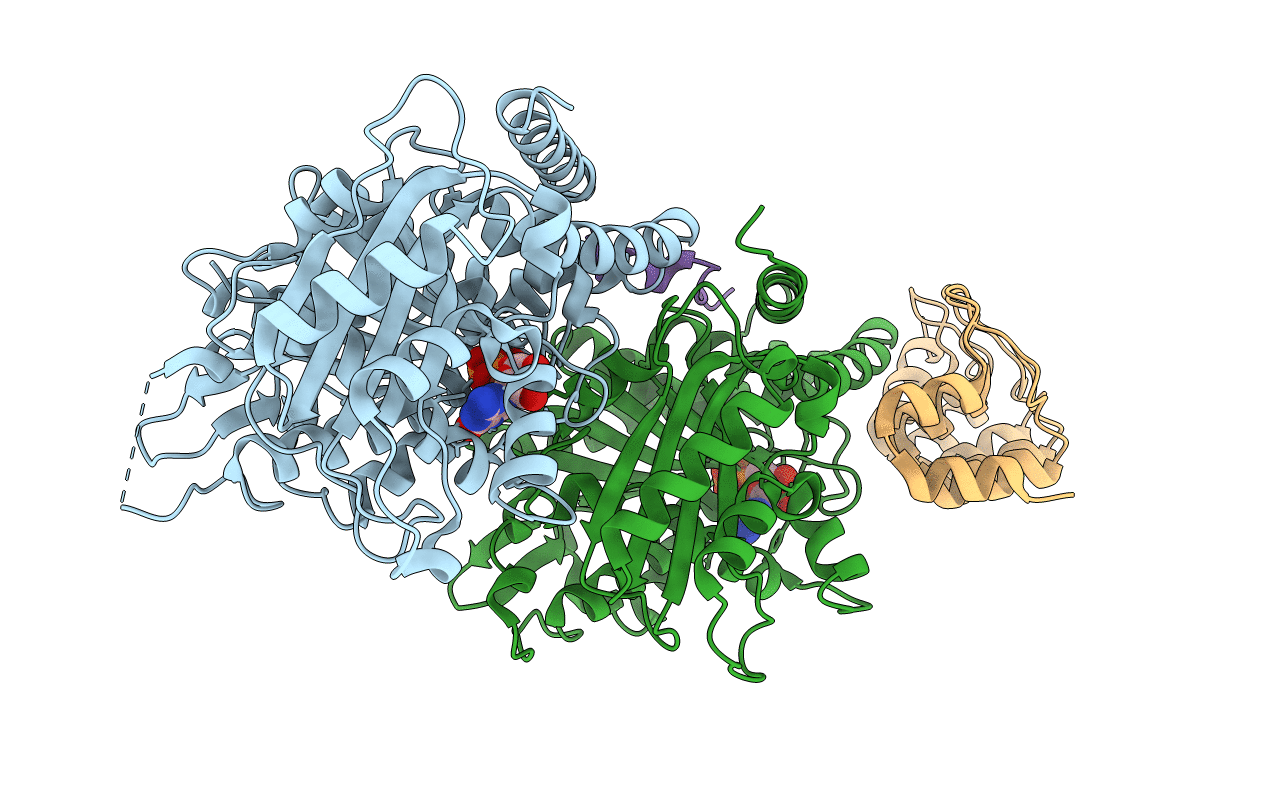
Deposition Date
2015-10-29
Release Date
2016-10-26
Last Version Date
2023-11-08
Entry Detail
PDB ID:
5EIB
Keywords:
Title:
Crystal structure of CPAP PN2-3 C-terminal loop-helix in complex with DARPin-tubulin
Biological Source:
Source Organism:
synthetic construct (Taxon ID: 32630)
Homo sapiens (Taxon ID: 9606)
Bos taurus (Taxon ID: 9913)
Homo sapiens (Taxon ID: 9606)
Bos taurus (Taxon ID: 9913)
Host Organism:
Method Details:
Experimental Method:
Resolution:
2.10 Å
R-Value Free:
0.22
R-Value Work:
0.17
R-Value Observed:
0.17
Space Group:
P 1 21 1


